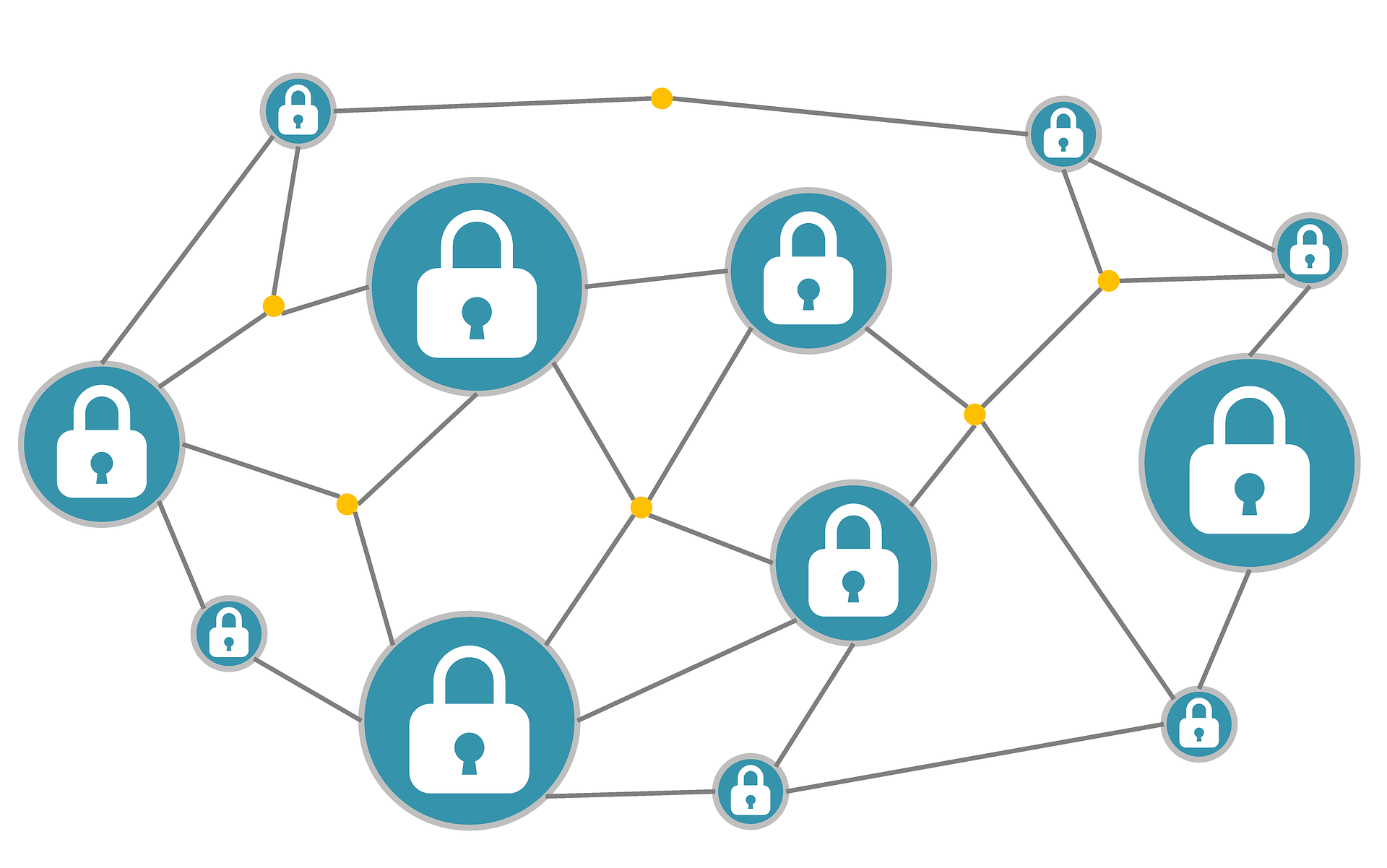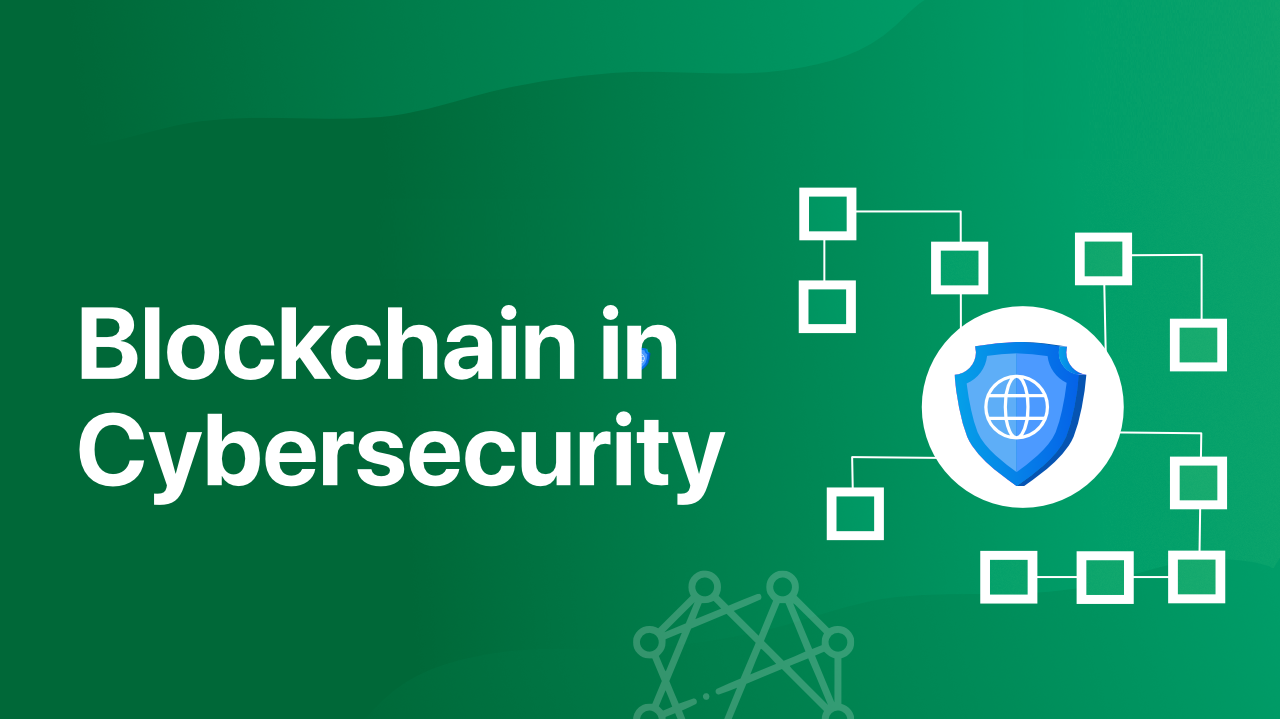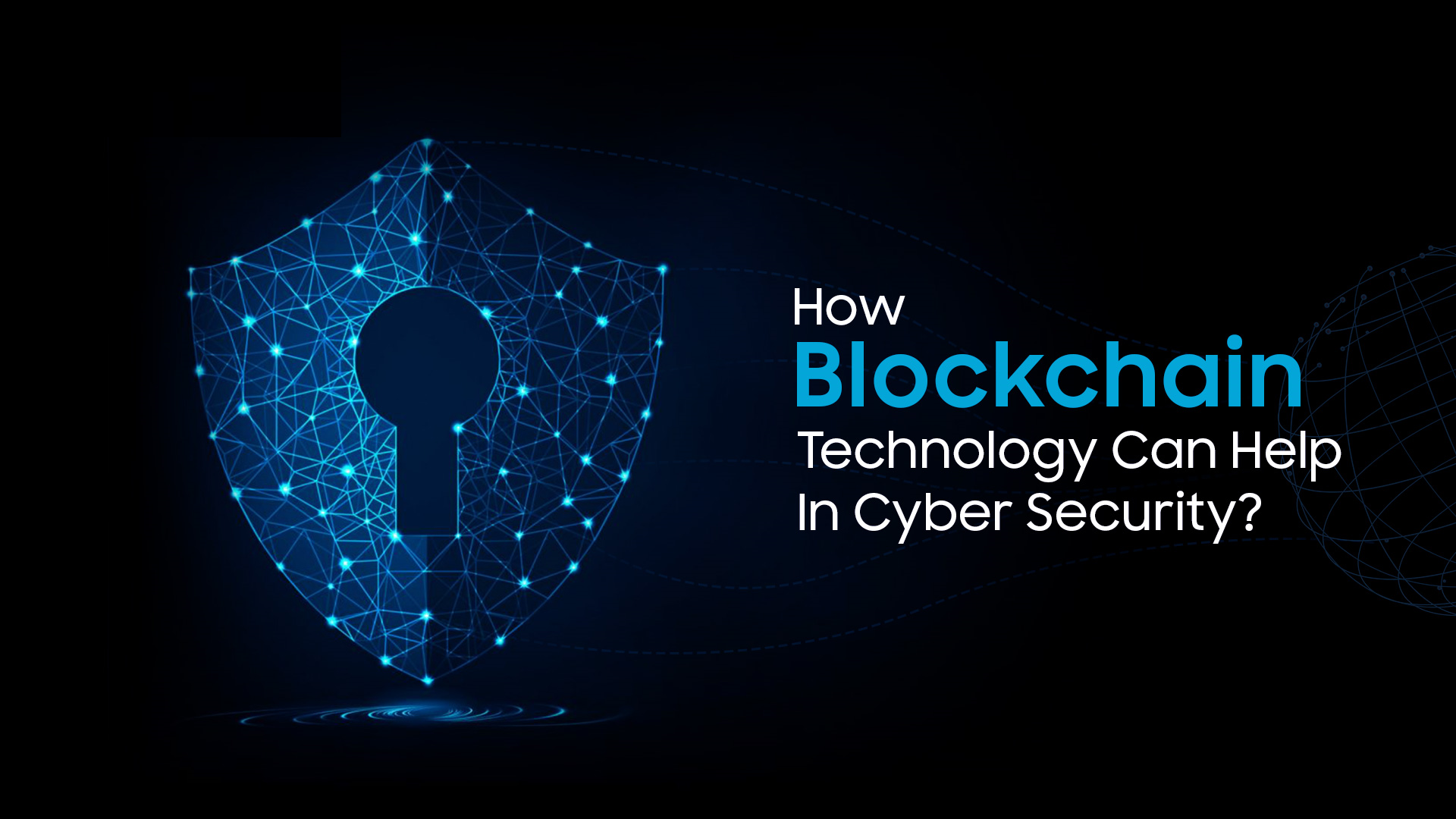Blockchain In Cybersecurity - 6 Reasons Why Blockchain Is Your Ultimate Security Shield
Unlock the Power of blockchain in cybersecurity - Discover how blockchain technology is revolutionizing cybersecurity. Stay ahead of threats and protect your digital assets effectively.
Author:James PierceReviewer:Camilo WoodFeb 19, 2024120 Shares13.3K Views

In an era where digital threats loom large and data breaches are an all-too-common occurrence, the integration of blockchain technology into cybersecurity strategies has emerged as a game-changer. Blockchain In Cybersecurity, originally devised as the underlying technology powering cryptocurrencies, has transcended its initial purpose to become a formidable fortress against cyber attacks.
Unlike traditional security measures, which often rely on centralized authorities vulnerable to single points of failure, blockchain operates on a decentralized network, making it virtually impervious to tampering and unauthorized access.
6 Reasons
While blockchain technology holds promise for enhancing security in various ways, it's crucial to acknowledge that it's not a panacea and comes with its own inherent vulnerabilities. Accurately portraying this complex relationship is essential for responsible information sharing.
Key considerations when evaluating blockchain's security potential:
1. Transparency And Immutability
- Positive -Records on a blockchain are transparent and tamper-proof, making it difficult to manipulate data or conceal fraudulent activity. This can enhance accountability and auditability in supply chains, voting systems, and other record-keeping applications.
- Considerations -Transparency itself can pose privacy concerns if sensitive data is not carefully managed. Immutability can also be problematic if errors are made, as they cannot be easily reversed.
2. Decentralization And Distribution
- Positive -The absence of a single point of failure makes blockchain networks robust against denial-of-service attacks and censorship attempts.
- Considerations -Distributed consensus mechanisms can be computationally expensive and slow, limiting scalability and throughput. Blockchain networks with fewer nodes or controlled by specific entities might still be vulnerable.
3. Cryptography And Encryption
- Positive -Strong cryptography protects data confidentiality and integrity on the blockchain.
- Considerations -Vulnerabilities in cryptographic algorithms or implementations can still be exploited. Secure key management remains critical.
4. Smart Contracts
- Positive -Automating processes with self-executing smart contracts can reduce human error and manual intervention, potentially mitigating certain attack vectors.
- Considerations -Smart contracts introduce additional complexity and potential attack surfaces. Poorly written or buggy smart contracts can be exploited to steal funds or disrupt operations.
5. Identity Management
- Positive -Blockchain-based identity solutions can offer secure and tamper-proof credentials, simplifying user authentication and authorization.
- Considerations -Privacy concerns need careful consideration, and ensuring interoperability with existing systems can be challenging.
6. Supply Chain Security
- Positive -Tracking goods and materials through a transparent, immutable blockchain can help combat counterfeiting and fraud in supply chains.
- Considerations -The effectiveness depends on trust and participation throughout the supply chain. Only the information put on the blockchain is tracked, not necessarily the physical integrity of the goods.
Addressing Key Points From Ratings
- It's important to avoid making absolute claims about blockchain being an "ultimate security shield." Instead, emphasize its potential to enhance specific security areas, acknowledging its limitations and trade-offs.
- Provide concrete examples of blockchain-based solutions successfully addressing real-world security challenges, but don't overpromise or make unsubstantiated claims.
- Acknowledge the evolving nature of both blockchain technology and cybersecurity threats, requiring ongoing vigilance and adaptation of security strategies.
What Are Some Practical Cybersecurity Applications Of Blockchain?
Blockchain technology offers several promising applications in the realm of cybersecurity, tackling specific challenges and offering unique advantages. Here are some practical examples:
1. Securing Medical Records
With immutability and access control functionalities, blockchain can ensure patient data privacy and integrity. Patients have centralized control over their records, granting access to specific healthcare providers securely. This can prevent unauthorized access, breaches, and data manipulation.
2. Managing Digital Identities
Decentralized Identity (DID) solutionson blockchain empower individuals to own and manage their digital identities, eliminating reliance on centralized authorities. This reduces the risk of identity theft and simplifies authentication across various platforms.
3. Securing Voting Systems
Blockchain-based voting systems can offer increased transparency, immutability, and auditability, reducing the risk of fraud and manipulation. Every vote is recorded and verifiable, promoting trust and confidence in the electoral process.
4. Enhancing Supply Chain Security
Tracking goods and assets throughout a supply chain on blockchain offers enhanced transparency and authenticity. This can combat counterfeiting, prevent tampering, and improve overall supply chain integrity, which is crucial for various industries.
5. Securing Internet Of Things (IoT) Devices
Vulnerable IoT devices are major cybersecurity concerns. Blockchain-based systems can secure communication between devices, authenticate them, and manage access control, mitigating the risk of cyberattacks and unauthorized access.
6. Secure Data Sharing And Collaboration
Blockchain can facilitate secure data sharing between organizations while maintaining individual ownership and access control. This is valuable for collaborative projects, sensitive data exchange, and preventing unauthorized access or leaks.
7. Secure Document Management
Important documents like contracts, certificates, or intellectual property can be stored securely on blockchain, guaranteeing authenticity and tamper-proof records. This simplifies verification, streamlines processes, and enhances trust in document authenticity.
8. Secure Multi-party Authentication
Blockchain can facilitate secure multi-party authentication for systems or transactions requiring authorization from multiple individuals or entities. This eliminates single points of failure and strengthens overall security measures.
9. Cybersecurity Audits And Monitoring
The immutable nature of blockchain can simplify security audits and provide tamper-proof logs for monitoring system activity. This helps identify suspicious activity, detect anomalies, and improve overall security posture.
10. Securing Domain Name Systems (DNS)
Blockchain can be used to create decentralized and more secure DNS systems, mitigating the risk of DNS hijacking and attacks that can disrupt website access or redirect users to malicious sites.
How Cybersecurity Impacts Blockchain Technology?
Cybersecurity and blockchain technology have a complex and intertwined relationship. While blockchain offers inherent security features, it's not immune to threats, and strong cybersecurity practices are crucial for its safe and effective use. Here's a breakdown of how cybersecurity impacts blockchain technology:
Positive Impacts Of Cybersecurity On Blockchain
- Mitigating vulnerabilities -Cybersecurity practices like penetration testing, vulnerability assessments, and secure coding help identify and address weaknesses in blockchain systems, reducing the risk of exploitation.
- Protecting sensitive information -Implementing encryption, access controls, and identity management techniques safeguards sensitive data stored on the blockchain, preventing unauthorized access or manipulation.
- Ensuring network integrity -Strong cybersecurity measures like consensus mechanisms and fraud detection systems help maintain the integrity of the blockchain network, preventing attacks like double-spending or data corruption.
- Building trust and adoption -Robust cybersecurity measures instill trust in blockchain technology, which is crucial for wider adoption and real-world implementation.
Negative Impacts Of Cybersecurity Challenges On Blockchain
- Scalability limitations -Implementing robust security measures on large-scale blockchains can be computationally expensive and slow down transaction processing, hindering scalability.
- Human error and social engineering -Phishing attacks, social engineering scams, and user negligence can compromise access to private keys and wallets, leading to theft of funds or manipulation of data.
- Emerging threats -As blockchain technology evolves, so do the associated security threats. Staying ahead of new attack vectors and developing effective countermeasures requires continuous innovation and collaboration in the cybersecurity space.
- Regulatory uncertainty -Lack of clear regulatory frameworks around blockchain and digital assets can create confusion and make it harder to implement effective security controls.
Traditional Cybersecurity Best Practices And Blockchain
While blockchain boasts unique security features, it's not a magic bullet. Traditional cybersecurity best practices remain essential for building secure and resilient blockchain systems. Here's a breakdown of how these practices intertwine:
Traditional Best Practices
1. Access Control -Blockchain benefits from granular access controls, restricting who can view, write, or modify data based on pre-defined roles and permissions. This aligns with the principle of least privilege in traditional security.
2. Data Security -Strong encryption technologies like AES and hashing algorithms like SHA-256 should be used to protect sensitive data stored on and off the blockchain, mirroring traditional data security approaches.
3. Identity Management -Blockchain can leverage existing identity management frameworks like PKI (Public Key Infrastructure) or digital signatures to authenticate users and verify transactions, building upon traditional methods.
4. Incident Response -Having a defined incident response plan is crucial for identifying, mitigating, and recovering from security breaches promptly. This plan should address both blockchain-specific and traditional IT infrastructure vulnerabilities.
5. Threat Intelligence -Staying informed about emerging threats and vulnerabilities targeting blockchain systems, including smart contracts, consensus mechanisms, and wallets, is vital for proactive defense. This echoes the importance of threat intelligence in traditional security.
6. Vulnerability Management -Regularly conducting penetration testing, vulnerability assessments, and security audits for both blockchain nodes and associated infrastructure identifies and addresses weaknesses before attackers exploit them. This overlaps with traditional vulnerability management practices.
7. Patch Management -Timely patching of known vulnerabilities in blockchain software and underlying dependencies is crucial to prevent attackers from exploiting them. This mirrors traditional patch management best practices.
8. Security Awareness and Training -Educating users and developers about blockchain-specific security risks and best practices can significantly reduce human error and social engineering attacks, aligning with traditional security awareness training.
FAQ's About Blockchain In Cybersecurity
How Is Blockchain Used In Security?
Blockchain security refers to the combination of cybersecurity principles, tools, and best practices in order to mitigate risk and avoid malicious attacks and unauthorized access while operating on blockchain networks.
Which Is Better Blockchain Or Cyber Security?
Cybersecurity measures are designed to protect data from unauthorized access. Blockchain, on the other hand, is designed to provide transparency and immutability. Once data has been added to the blockchain, it cannot be altered or deleted, ensuring that data is tamper-proof and transparent.
Is Blockchain The Future Of Cyber Security?
The Future of Cybersecurity Lies in Blockchain Technology. Blockchain also has the potential to facilitate secure threat intelligence sharing among organizations, enhance data encryption, and improve privacy. It transforms trust, transparency, and data integrity.
Conclusion
The marriage of blockchain and cybersecurity marks a pivotal moment in the ongoing quest for digital resilience. As cyber threats continue to evolve in sophistication and scale, traditional security measures alone prove inadequate in safeguarding sensitive information and critical infrastructure.
As we look to the future, the integration of blockchain into cybersecurity strategies promises not only greater protection against cyber threats but also the potential for a more secure and trustworthy digital ecosystem for generations to come.

James Pierce
Author

Camilo Wood
Reviewer
Latest Articles
Popular Articles

